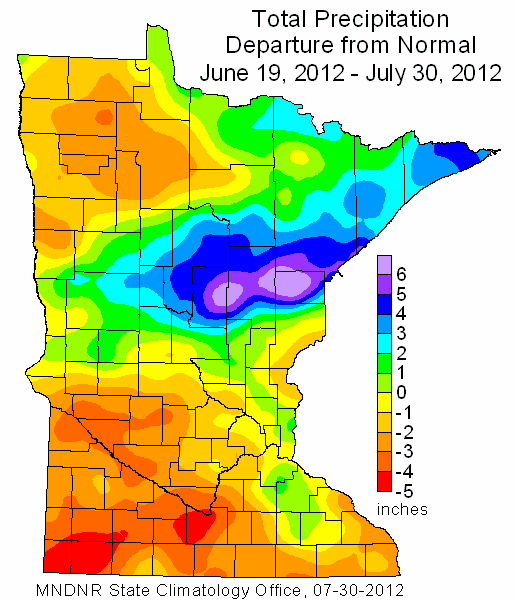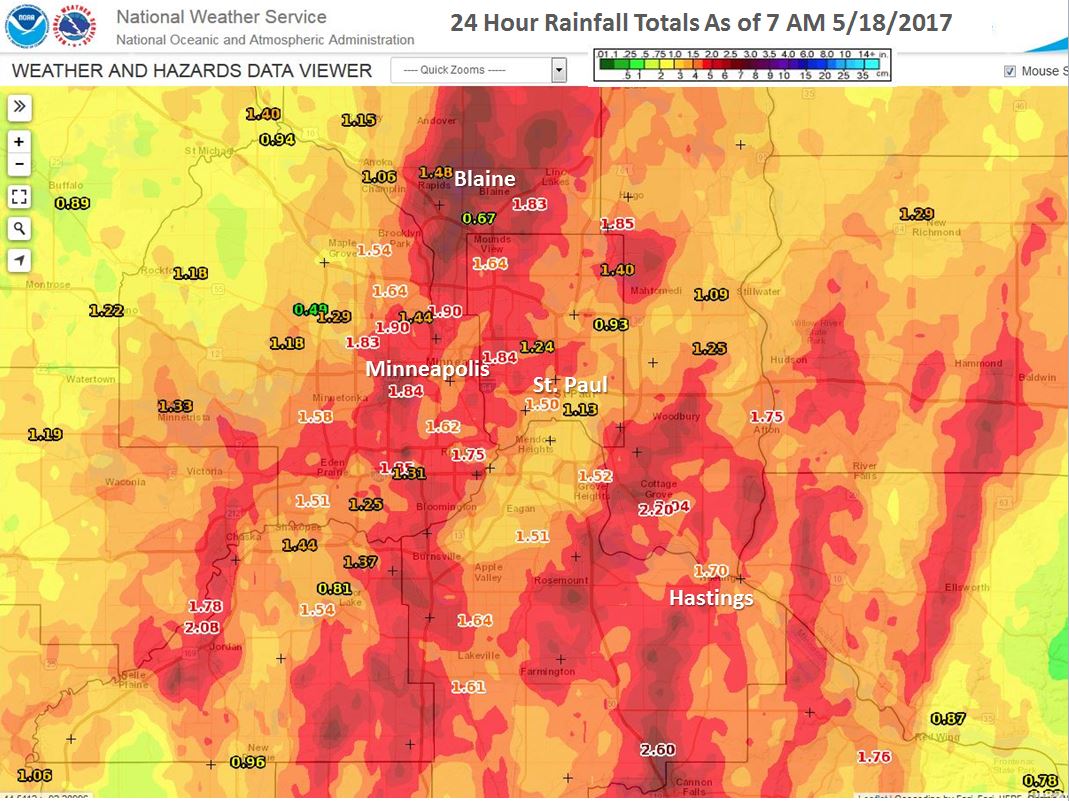
Models also show stable or decreasing summer precipitation. Looking into the future, most climate models show at least a slight increase in projected annual precipitation across the state. The northwest corner of the state, on average, gets 15 inches less precipitation than the southeast (an annual average of 22 inches compared to 36 inches, respectively). In Greater Minnesota, more frequent heavy rains have been causing low areas to flood, resulting in crop, home, and business damages. Increasing rainfall in the spring and autumn months accounted for most of that increase.

Between 19, total precipitation amounts increased by over 20% (5.5 inches) in the Twin Cities.

Have you thought recently about how rainfall in Minnesota seems different than it used to? Well, you’re probably right. Corn, in particular, can be irreparably damaged when temperatures are at or above 95° F for one or more days. Some folks think that these warmer temperatures will support agricultural efforts and increase productivity, but the real threat to crops are days that reach temperatures above 95° F. Temperatures in Greater Minnesota are also projected to rise. Temperatures in the northern part of the state rose even more quickly than those in the central and southern portions.īased on historical trends, models project that the average temperature in the Twin Cities metro area will rise between 3° and 5° F through mid-century, with more high temperature days (days above 90° F). Average low temperatures have risen more quickly than the average highs throughout the state, especially nighttime lows. Statewide, temperatures have increased 1° to 3° F. Individuals that live in dense, urban areas of environmental justice concern, including low income and/or communities of color, can be especially impacted. This phenomenon is referred to as an urban heat island, and conditions can be dangerous for those caught unaware or unprepared. On an 88° day, that means that temperatures in some places can rise to over 100°. Some parts of the cities can spike up to 9° higher than other areas. This doesn’t seem like much, but in the cities, that small increase can add up. In the Twin Cities, annual average temperatures increased by 3.2° F from 1951 to 2012, which was faster than both national and global rates of increase. Much of the excess greenhouse gas emissions come from human activities - burning fossil fuels for transportation or electricity generation (CO 2) agricultural and animal husbandry practices (methane), or air conditioning units (HFCs). Greenhouse gases that have the most impact on climate change include carbon dioxide (CO 2), nitrous oxide (N 2O), methane (CH 4), sulfur hexafluoride (SF 6), hydrofluorocarbons (HFCs), and perfluorocarbons (PFCs).

Across the state, communities and individuals are experiencing higher temperatures, more extreme storms with intense flooding, and changes in our unique and cherished ecosystems.Ĭlimate change, caused primarily by the excess release of greenhouse gases, is having a real and significant impact on communities all over the world. More and more, Minnesotans are starting to notice the effects of climate change here at home. Environmental Quality Information System (EQuIS).EDA: Guide to typical Minnesota water quality conditions.Small Business Environmental Assistance.


 0 kommentar(er)
0 kommentar(er)
